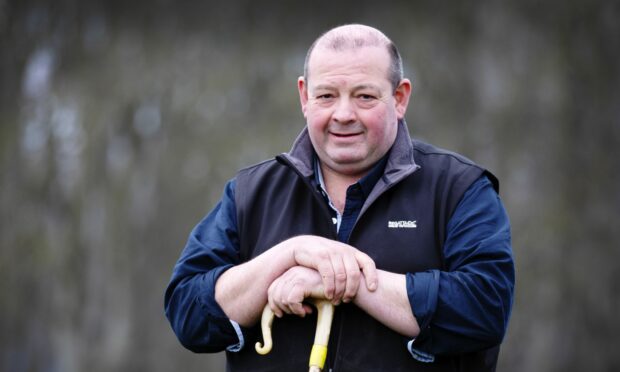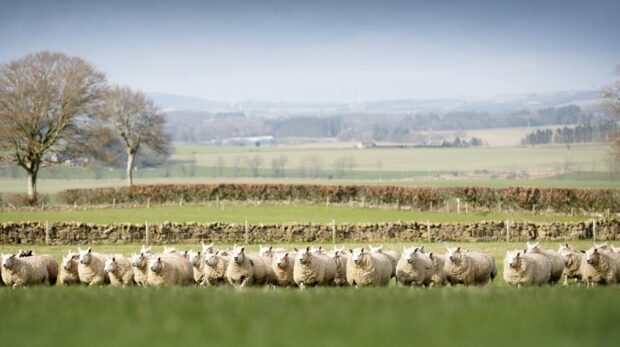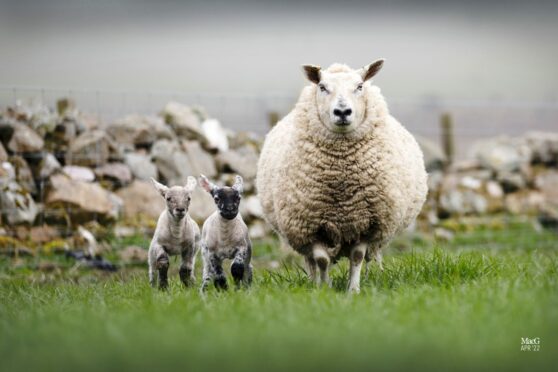Farmer Harry Emslie says “future fit” farming is about challenging his family’s traditional system and replacing it with one that will remain sustainable and profitable.
The strategy has seen the Aberdeenshire sheep enterprise grow 10-fold to 4,000 ewes managed in a low-input system.
Harry says maximising kilos of lamb per acre from a pure forage-based system is the strategic way to go, underpinned by a combination of genetics and knowledge from QMS’s grazing group. Furthermore, it’s about economies of scale.
His shepherding team, Jac Roberts and Mhari MacLeod, are already demonstrating they can manage a 4,000-ewe flock complemented by 100 pedigree and commercial cows and 100 breeding heifers on the 1,000-acre unit across three farms.
“We are breeding a ewe that will do the work for us and so far have introduced the Aberfield maternal sire to develop a 1,000-ewe crossbred flock, which we are crossing with the Primera meat sire run on a 300-acre unit that includes 50 acres fodder beet,” he explained.
“We are breeding an Aberfield cross flock that can lamb by itself outdoors on to a flush of grass from mid-April.”
Ewes and lambs are set-stocked before moving on to a 21-day rotational grazing system stocked at approximately15 ewes and lambs per acre.
The business normally budgeted £7 to £9 per lamb pre-lambing concentrate for its March-lambing ewes bearing twins, and with this year’s rise in raw material costs, £29 per lamb for creep feed. However, Harry says the new genetics are demonstrating low-maintenance demands.
“The Aberfield flock has received no concentrate since its inception – instead ewes grazed fodder beet costing 3p to 4p a day over three months pre-lambing. Fodder beet is their only source of protein and starch and so far, seems to be doing them well.”
The last six years have seen the Mintlaw-based farming business undergo a big cultural change.
Harry said: “We’re trying to get the farm to do what we think it can do and, since we’re interested in livestock, decided it was time to go back to basics. For us, a sheep enterprise is the answer, but we’re aware it’s not for everyone.
“Everyone wants to produce a lamb that would top the market. However, to get a good Continental or native bred ram we were paying over the odds, they had a poor ewe ratio and they didn’t seem to last on our system.
“There’s got to be a willingness to consider changing. It’s all about having the right mindset and team to make it work.”
As well as improving flock performance and maximising output from forage, fertiliser has been completely cut from one of the three units, and while zero nitrogen encouraged clover to naturally come back, Harry anticipates all three farms couldn’t thrive without fertiliser.


